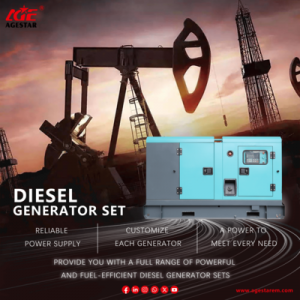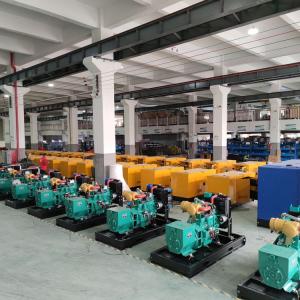What is Single-phase Generator Set and Three-phase Generator Set?
Single-phase Generator Set & Three-phase Generator SetA single-phase generator set is a type of electrical power generator that produces a single alternating current (AC) waveform. It consists of an engine (typically powered by diesel, gasoline, or natural gas) connected to an alternator, which generates the electrical power.
On the other hand, a three-phase generator set is a generator that generates electrical power with three alternating current waveforms that are 120 degrees out of phase with each other. It also consists of an engine and an alternator.
Difference Between Single-phase and Three-phase
Single-phase generator sets and three-phase generator sets are types of electrical power generators that provide different levels of electrical output and are suited for different applications.
Single-phase generator sets generate electrical power with a single alternating current (AC) waveform. They typically have two output terminals: a live wire (also known as the "hot" wire) and a neutral wire. Single-phase generators are commonly used for residential and small commercial applications where the electrical load is relatively light, such as powering household appliances or small businesses.
What is Single-phase Generator Set and Three-phase Generator Set (1)
In contrast, three-phase generator sets produce electrical power with three alternating current waveforms that are 120 degrees out of phase with each other. They usually have four output terminals: three live wires (also known as "hot" wires) and a neutral wire. Three-phase generators are commonly utilized in industrial and commercial settings, where there is a higher demand for electrical power to operate large machinery, motors, HVAC systems, and other heavy loads.
Advantages of Three-phase Generator Sets
Higher power output: Three-phase generators can deliver significantly more power compared to similarly sized single-phase generators. This is because the power in a three-phase system is distributed more evenly across the three phases, resulting in a smoother and more efficient power delivery.
Balanced loads: Three-phase power allows for the balanced distribution of electrical loads, reducing electrical stress and improving the overall performance of connected equipment.
Motor starting capability: Three-phase generators are better suited for starting and running large motors due to their higher power capacity.
It's worth noting that the choice between a single-phase and three-phase generator set depends on the specific power requirements of the application, load characteristics, and the availability of electric utility services.






